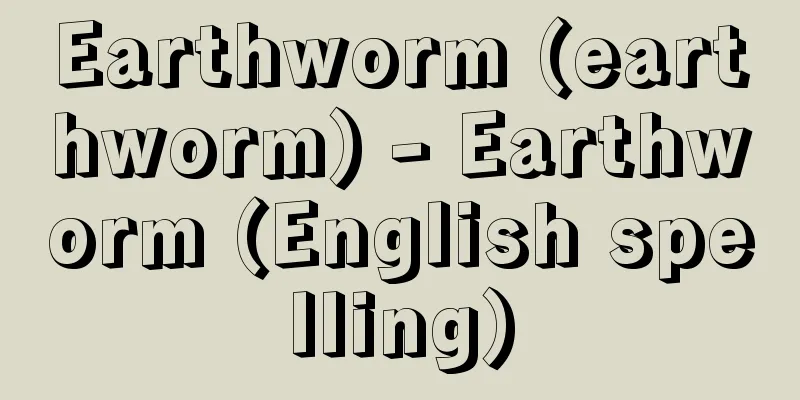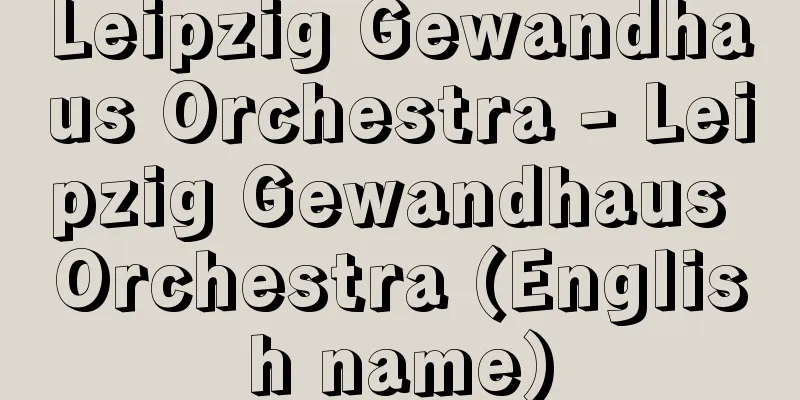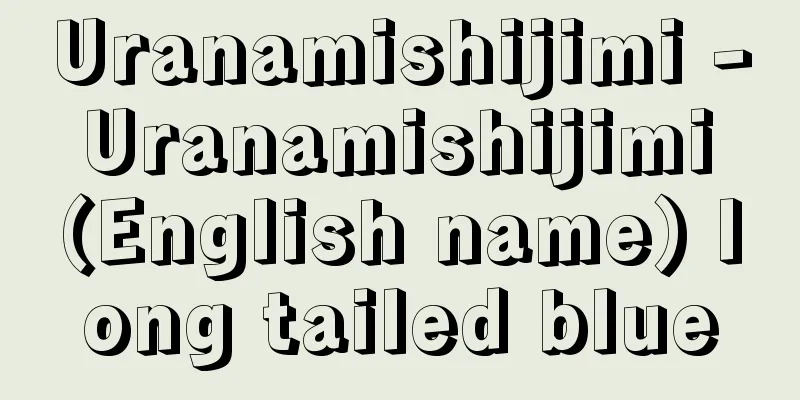Earthworm (earthworm) - Earthworm (English spelling)

|
A general term for annelids in the class Oligochaeta. The name is said to be derived from Memiezu, as they have no eyes. The character ten means earthworm, but later came to be used colloquially to mean silkworm. They live in fields, pastures, swamps, lakes, groundwater, and a few species also live on the coast, and are distributed widely around the world. It is thought that a type of marine worm entered freshwater, and then some of them moved to a land-based lifestyle and became large oligochaetes, and the freshwater species are generally small and primitive in form. Source: Heibonsha World Encyclopedia, 2nd Edition Information |
|
貧毛綱Oligochaeta(貧毛類)に含まれる環形動物の総称。眼がないのでメミエズから転じた名といわれる。蚕(てん)はミミズの意の別字であるが,のちカイコの意に俗用された。畑,牧草地,沼や湖,地下水や少数の種類は海岸にもすみ,地球上に広く分布する。海産のゴカイ類の一種が淡水に入り,その後一部のものが陸上生活に移って大型な貧毛類になったと考えられ,淡水産の種類は一般に小型で原始的な形態をもっている。
出典 株式会社平凡社世界大百科事典 第2版について 情報 |
<<: Owl (English name) Ledra auditura
Recommend
Kosode Soga Azami Colored Sleeves - Kosode Soga Azami Colored Sleeves
Kabuki kyogen. Sewamono (domestic story). 4 acts. ...
Albi (English spelling)
The capital of the Tarn department in southern Fra...
Matching whetstone - Awasedo
1. Used for finishing after rough grinding; dense ...
Iresine lindenii (English spelling)
… [Takabayashi Masatoshi]. … *Some of the termino...
Flute - Furuuto (English spelling) flute English
A non-reed wind instrument. In the broad sense, i...
Sokotsunagaya - Sokotsunagaya
Rakugo. This is an old rakugo that has been perfo...
Religious Wars
...Armed conflict between Catholics and Protestan...
Minumadaiyosui (Minumadai Irrigation Canal)
It is the largest agricultural waterway in the Ka...
Ezogozentachibana - Ezogozentachibana
…It is distributed from central Honshu northward,...
Beschi, CG (English spelling) BeschiCG
…In South India, they appealed to the rulers of t...
Opera House
...The Bayreuth Festival Theater, built by Wagner...
Environmental Radiation Monitoring
…In contrast, radiation resulting from peaceful u...
War Victims Assistance
Systems to support war victims based on the spirit...
Association for the Protection of Working People's Livelihoods
...After World War II, in October 1945, the movem...
I.D. reaction - I.D. reaction
...A disease characterized by the occurrence of n...









